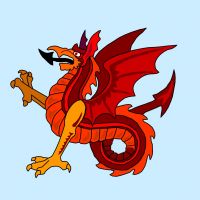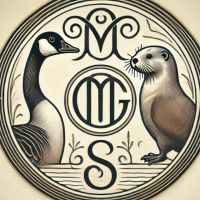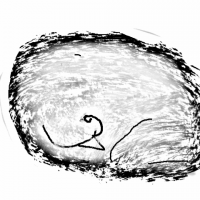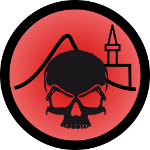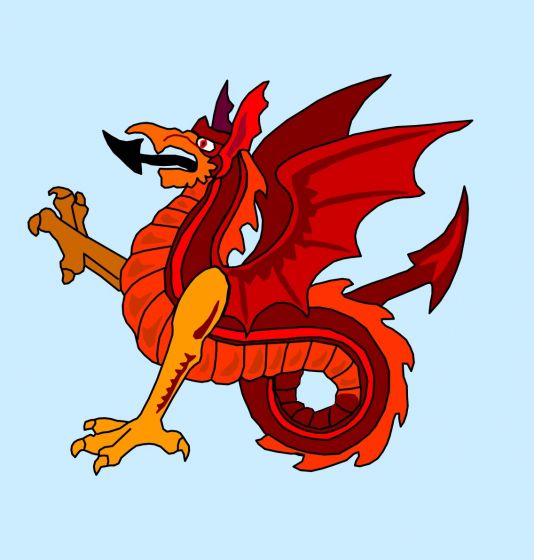
Wyvern
Wyvern
About
- Username
- Wyvern
- Joined
- Visits
- 3,125
- Last Active
- Roles
- Member
- Points
- 5,360
- Rank
- Cartographer
- Badges
- 24
-
Galery of NPC
Mathieu Gans remarked@Mathieu Gans: At the moment, I've kind of given up on Character Artist 3, as I find the characters too static. I'd really like an Add-on that would allow me to give different poses to NPCs, have more assets for equipment, and effects to put on characters.
There are more options in the original, vector-style, Character Artist, and it's much easier to draw additional elements when you need them in that. It is a simpler and much less "artistic" drawing style, however. It does though give you more control over what characters drawn using it look like.
-
Community Atlas: Aenos Isle North, Demosthenes Swamp, Artemisia
In this instance, the map layout left irritating amounts of space around the main, almost octopoid, shape of the caverns, so that provided an opportunity to go more to-town with some decorative elements here than usual.
Of course, they could be used too to illustrate where dangers lie on an overland map, using a similar "roundel" look to the Ancient Realms style, for things instead of places, as another example.
-
Game Masters: Preferences for Labeling on Game Maps
Battlemaps for physical tabletop use shouldn't be labelled at all, because that distracts from the scenic element, and if the map's reasonably clearly drawn, the key features should be obvious anyway - that's largely the point, after all! If you'll need to add hidden elements, use cut-out markers you can drop-in on the map when & where appropriate (or use suitable 3D miniatures/items, like doors, treasure chests, etc.). The process/theory stands for VTT use as well, except everything is digital, of course.
As I've never used VTT, I can't advise much on that element, although hiding and showing features using the CC3+ Layers is straightforward enough in the FCW files, and easy enough too to store as separate digital images of the relevant views. I'd assume swapping between such separate images should be relatively simple in VTT, but I may be assuming too much on the part of such systems' designers, I realise! (Given that Windows still has to catch up with where some of the alternative PC systems then were 30+ years ago...)
The only labelled maps are the ones the GM needs to see, other than any props the players may be given/shown - such as a treasure map - and on such props the labels can be as clear or obscure as the needs of the game require.
-
Community Atlas: Kara's Vale, Ethra, Doriant
Nah!
Once you start using it, you're simply concentrating on what links with the current level you're on, and everything else doesn't really matter. I also found it was really quick to work out how to get from one place to another through several levels rapidly just using this.
I was less sure about using just red and green arrow lines, given red-green colour-blindness is an issue for quite a number of folks, but having set up the portals with those colours already (because they looked a bit clearer on the individual Level maps), I didn't want to change them. Hopefully the single and double arrow heads will help alleviate any issues that way though.
-
[WIP] The Griffon's Eyrie Redux: Spectrum Overland
-
Dark Fantasy Annual river-line weirdness
No, it was just as if it were a glitch that happened when I reopened the Dark Fantasy map today Sue. I think it's somehow been a hangover from the Handdrawn Fantasy style I was using the day before, as if the program was somehow "remembering" that, instead of only using the correct set of tool templates.
I wanted to flag it here, since it seems possible there's something going on in the software causing this to occur, as I couldn't think of an alternative explanation for why it happened.
After it switched back to the correct tools, it never happened again, as I was reusing the river drawing tools (as amended) for some time after that. As I said though, weird 😁!
-
[WIP] The Griffon's Eyrie Redux: Spectrum Overland
A better map already, simply for the name-change, of course 😉.
The sea looks a bit odd now though, as if it's actually a sea of mist, not water. Previously, the base of the cliffs had hints of white about them, a little like spray, and the sea surface had some texture to it. Now it just seems oddly textureless and flat.
For the crescent moon, we've had this discussion before, sort-of, in regard to using the CA22 Star Systems dynamic-lighting planet symbols. It's not really possible to use the dynamic lighting to create a proper crescent, though you can get a crude earthlit-crescent-ish effect, using a negative value for the Global Sun's Inclination (try around -20 to -40 degrees). Beyond that, you could simply take a suitable flat planet image, even a photo of Earth's Moon, and create a mask for the unlit part of the crescent using one of the darker Solid bitmap fills.
-
[WIP] The Griffon's Eyrie Redux: Spectrum Overland
Yep, the sea looks better this way now!
The Moon is always tricky, because it should affect the lighting on the whole map, and if it doesn't, it can look odd. Technically, for the almost last quarter phase you have currently, it'd be unlikely the unlit side of the Moon would be visible; by that phase, the lit amount is too great for the pale earthlit shine to remain visible. Appreciating this is more artist's view than photo-realism, however!
-
Castle Perilous
-
Border Templates
Not sure about just a paper edge for something vaguely science-fiction future. The whole sheet probably should have its own look/texture - like parchment or vellum did in previous centuries (albeit still in use for high-quality or special items today).
Perhaps something like a metal scroll would be used for futuristic mapping, with the design etched into the surface, if we're thinking of similarly long-lasting, quality materials to vellum, say.
For modern paper, we have the recent Sticky Note Dungeon Annual options, of course, and further back in time, the Annual issue covering Investigation Props might be worth a look too. Note that the latter option has a ready-made computer readout background option!


